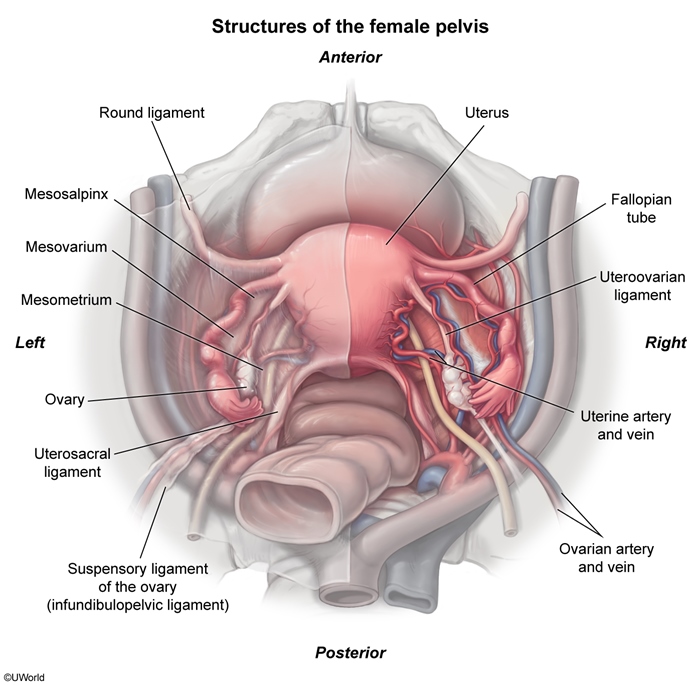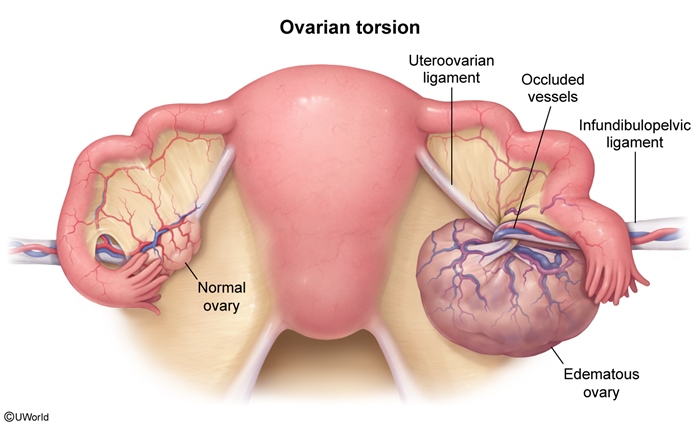Ovarian Torsion
Article Sections
Introduction
Ovarian torsion is a gynecologic emergency characterized by the partial or complete rotation of the ovary around its vascular supply, leading to compromised blood flow and possible ischemia.
Pathophysiology
Ovarian torsion occurs when the ovary twists around the infundibulopelvic ligament (Figure 1) (also known as the suspensory ligament of the ovary) and uteroovarian ligament, resulting in the compression of the ovarian vessels (Figure 2). Prolonged compression of the ovarian vessels can result in ovarian tissue edema, ischemia, and infarction.
Right-sided torsions are more common because of the greater length of the right uteroovarian ligament and because the rectosigmoid colon takes up space around the left ovary (leaving less room for movement).
Risk factors
The most important risk factors for ovarian torsion are an ovarian mass (usually ≥5 cm in diameter) and prior ovarian torsion. Causes of ovarian masses that can cause torsion include:
Continue Learning with UWorld
Get the full Ovarian Torsion article plus rich visuals, real-world cases, and in-depth insights from medical experts, all available through the UWorld Medical Library.
Figures

